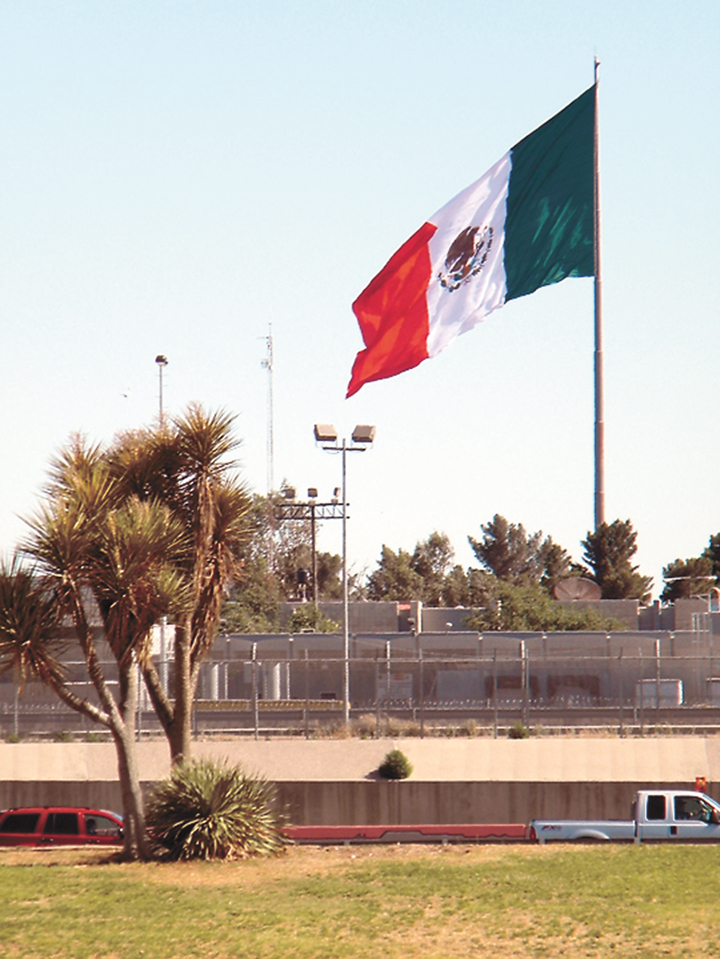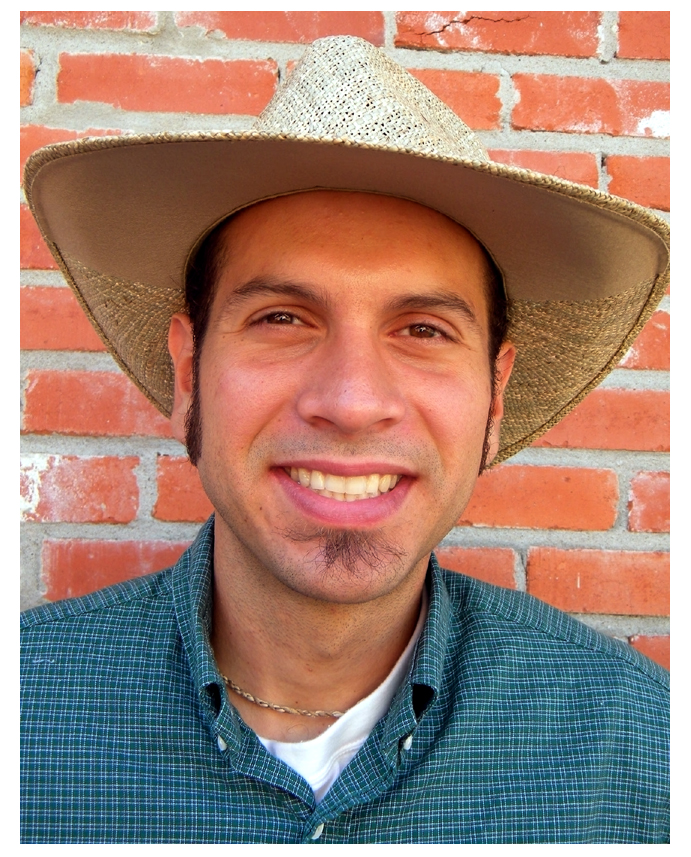 “The local law enforcement is now advising people to have guns. Well, it’s about time.”
“The local law enforcement is now advising people to have guns. Well, it’s about time.”
— Fort Hancock resident to me, paraphrased
 In leaving El Paso, I opted to loop west and south so I could walk directly by the border fence. I had been advised by an El Paso border agent to stay as far
In leaving El Paso, I opted to loop west and south so I could walk directly by the border fence. I had been advised by an El Paso border agent to stay as far
from the fence as possible, but I didn’t come all this way only to avoid sneaking a peek.
The fence is a massive, imposing structure, so big in fact that there should be an upgrade in vocabulary as between ‘sign’ and ‘billboard.’ I walked alongside a highway – the mega-fence on the other side – hoping this buffer zone would be sufficient enough to prove my citizenship. Little did I know that my first test would have little to do with buffers and metal dividers.
As I continued, I crossed the main passage between El Paso and Juarez. A traffic jam had occurred, and there was a cacophony of car honking. Above the cars, the inspection station, and the bridge was an enormous Mexican flag moving slowly in the strong wind, an ever-changing contour map of highs and lows.
When I got to Fort Hancock, I started hearing firsthand accounts of border woes. These stories had an altogether different tenor than the ones I heard from the interior of the state. I met one fellow who had a 9mm strapped to his waist and admitted that he frequently made citizen’s arrests, then called the border patrol. I was told that one family had
made 500 arrests in three years, and though unsubstantiated, the rumor brings to mind the kind of influx residents are facing.
You might be wondering how a backpacker like me can navigate these communities given that a good amount of foot travel in the area is illegal. I wondered the same thing. When I was passing my first checkpoint on Highways 62/180, I met a lot of border agents and explained my project. I talked with so many, in fact, that as I was hiking the next day some border agents waved and honked. This isn’t going to be so hard, I thought.
This, I found, was premature.
On my way out of Fort Hancock, I took a short break under a large cottonwood. I hadn’t been there ten minutes when I saw a border patrol jeep pass, then do a U-turn. I knew what was coming. The agent came and asked the usual questions, but when he asked if I had a criminal history, I tried to think if I had any outstanding traffic violations. He took my hesitation as guilt and for the remainder of our interaction, things went, as it were, south.
The agent asked for my ID and spoke to me like I was two minutes away from being busted. To say that his demeanor was merely unpleasant would be a compliment. While my background check was processing, he asked
if I would consent to having my bag inspected. What?! This question caught me completely off guard. I blubbered a bit, insulted at how far things had gone, but ultimately declined to give consent. My ID cleared, and the guy was silently incredulous. He was done with me.
This encounter, the conversations in Fort Hancock, and a gargantuan fence all point toward the greater truth of the region. Life seems normal enough, with the coming and going of people and cars and the quiet hours of rural Texas, but it is far from picturesque. The nighttime lights may shine as one huge clump of humanity, but when the sun comes up, the fence – both metal and human – remains as a testament to the darkness.
Smatt is the penname of S.Matt Read. A writer, inventor, baker, and hiker, he is currently hiking the entire outline of the state. Follow his adventure here and at www.texasperimeterhike.blogspot.com and www.twitter.com/perimeterhiker.
The Texas Perimeter Hike — Installment #9
— Fort Hancock resident to me, paraphrased
from the fence as possible, but I didn’t come all this way only to avoid sneaking a peek.
The fence is a massive, imposing structure, so big in fact that there should be an upgrade in vocabulary as between ‘sign’ and ‘billboard.’ I walked alongside a highway – the mega-fence on the other side – hoping this buffer zone would be sufficient enough to prove my citizenship. Little did I know that my first test would have little to do with buffers and metal dividers.
As I continued, I crossed the main passage between El Paso and Juarez. A traffic jam had occurred, and there was a cacophony of car honking. Above the cars, the inspection station, and the bridge was an enormous Mexican flag moving slowly in the strong wind, an ever-changing contour map of highs and lows.
When I got to Fort Hancock, I started hearing firsthand accounts of border woes. These stories had an altogether different tenor than the ones I heard from the interior of the state. I met one fellow who had a 9mm strapped to his waist and admitted that he frequently made citizen’s arrests, then called the border patrol. I was told that one family had
made 500 arrests in three years, and though unsubstantiated, the rumor brings to mind the kind of influx residents are facing.
You might be wondering how a backpacker like me can navigate these communities given that a good amount of foot travel in the area is illegal. I wondered the same thing. When I was passing my first checkpoint on Highways 62/180, I met a lot of border agents and explained my project. I talked with so many, in fact, that as I was hiking the next day some border agents waved and honked. This isn’t going to be so hard, I thought.
This, I found, was premature.
On my way out of Fort Hancock, I took a short break under a large cottonwood. I hadn’t been there ten minutes when I saw a border patrol jeep pass, then do a U-turn. I knew what was coming. The agent came and asked the usual questions, but when he asked if I had a criminal history, I tried to think if I had any outstanding traffic violations. He took my hesitation as guilt and for the remainder of our interaction, things went, as it were, south.
The agent asked for my ID and spoke to me like I was two minutes away from being busted. To say that his demeanor was merely unpleasant would be a compliment. While my background check was processing, he asked
if I would consent to having my bag inspected. What?! This question caught me completely off guard. I blubbered a bit, insulted at how far things had gone, but ultimately declined to give consent. My ID cleared, and the guy was silently incredulous. He was done with me.
This encounter, the conversations in Fort Hancock, and a gargantuan fence all point toward the greater truth of the region. Life seems normal enough, with the coming and going of people and cars and the quiet hours of rural Texas, but it is far from picturesque. The nighttime lights may shine as one huge clump of humanity, but when the sun comes up, the fence – both metal and human – remains as a testament to the darkness.
Smatt is the penname of S.Matt Read. A writer, inventor, baker, and hiker, he is currently hiking the entire outline of the state. Follow his adventure here and at www.texasperimeterhike.blogspot.com and www.twitter.com/perimeterhiker.